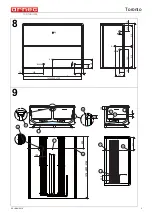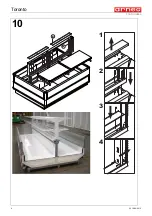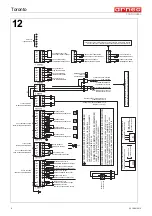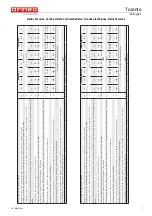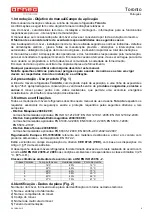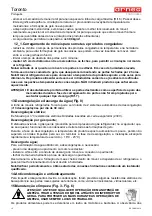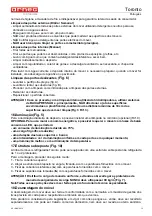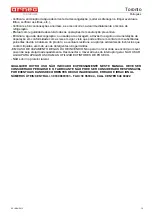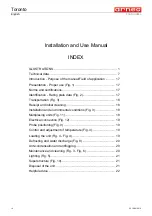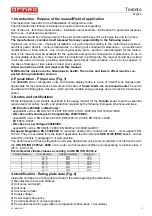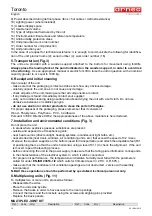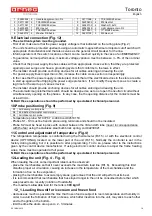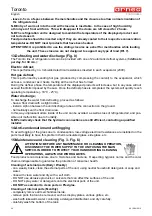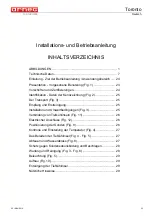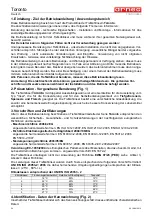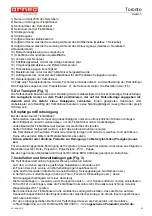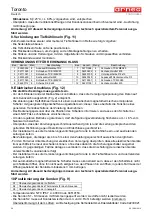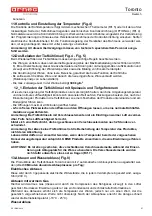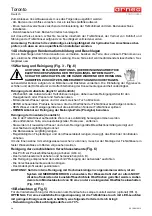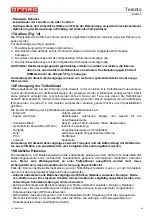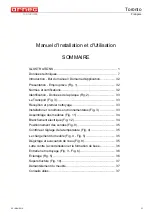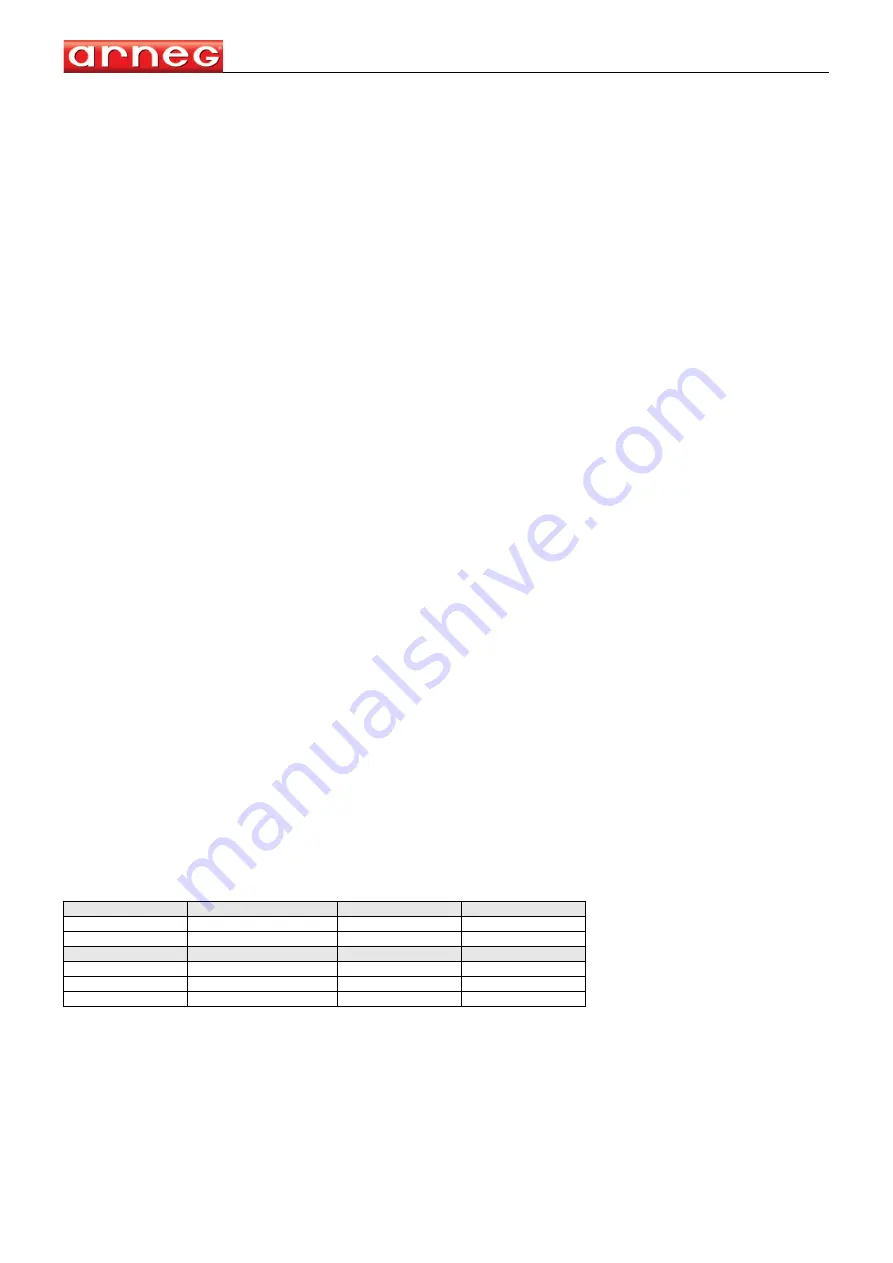
Toronto
English
00 18/04/2012
17
PORTUGUESA
1. Introduction - Purpose of the manual/Field of application
This instruction manual is for the
Toronto
line of refrigeration units.
The information that follows is intended to provide instructions regarding:
Use of the unit - technical characteristics - installation and assembly - information for personnel responsi-
ble for use - maintenance operations.
The manual should be considered part of the unit and should be kept for as long as the unit is in place.
The manufacturer considers itself released from any responsibility in the following cases:
Improper use of the unit - improper installation, not performed according to the instructions provided -
electrical power defects - serious deficiencies in carrying out scheduled maintenance - non-authorized
modifications or interventions - use of non-original spare parts - partial or total disregard for the instruc-
tions. This manual must be available for the operators and personnel assigned to maintenance, so as to
be consultable at any time. In the case that it is transferred to a third-party, the manual should be provided
to all new users or owners, providing appropriate and prompt communication of such to the supplier. In
the case of damage or loss, please contact your supplier.
All persons who use this unit must read this manual.
N.B.Electronic devices can be hazardous to health. The norms and laws in effect must be res-
pected during installation and use.
2. Presentation - Proper use (Fig. 1)
The
Toronto
line of refrigerator units, with double display tanks, is a line of "island" type display units,
appropriate for the conservation and self-service sales of
frozen foods, ice cream and meats
.The unit is
provided with sliding glass closures, which provide notable energy savings as well as better food preser-
vation.
3. Norms and certifications
All the refrigeration unit models described in the usage manual for the
Toronto
series meet the essential
requirements for safety, health, and protection required by the following European directives and laws:
- EC Directive 2006/42 on Machinery;
applied EN norms: EN ISO 14121:2007; EN ISO 12100-1:2005; EN ISO 12100-2:2003
- Directive on Electromagnetic Compatibility 2004/108/EC;
applied EN norms: EN 61000-3-2:2006; EN 61000-3-12:2005; EN 55014-1:2006;
EN 55014-2:1997;
- Directive on Low Voltage 2006/95/EC;
applied EN norms: EN 60335-1:2008; EN 60335-2-89 :2002/A2:2007
European Regulation
EC-1935/2004
on materials destined for contact with food - norm applied: EN
1672-2. They are excluded from the field of application found in directive
CEE 97/23 (PED)
based
on that
called for in Article 3, paragraph 3 of said directive.
The performance of these refrigeration units was determined using tests conducted in conformance with
the
UNI EN ISO 23953-2: 2006
norm under environmental conditions corresponding to climate class 3
(25°C , 60% U.R.)
Environmental climate classes according to UNI EN ISO 23953 -2
4. Identification - Rating plate data (Fig. 2)
Inside the unit there is a rating plate with all of the data regarding characteristics:
1) Manufacturer name and address
2) Unit name and length
3) Unit code
4) Unit serial number
5) Supply voltage
6) Power supply frequency
7) Current absorbed in normal operation
8) Power absorbed during operation in refrigeration phase (fans + hot cables)
Climate Classes
Dry bulb temp.
Relative Humidity
Dew point
1
16°C
80%
12°C
2
22°C
65%
15°C
3
25°C
60%
17°C
4
30°C
55%
20°C
5
40°C
40%
24°C
6
27°C
70%
21°C

